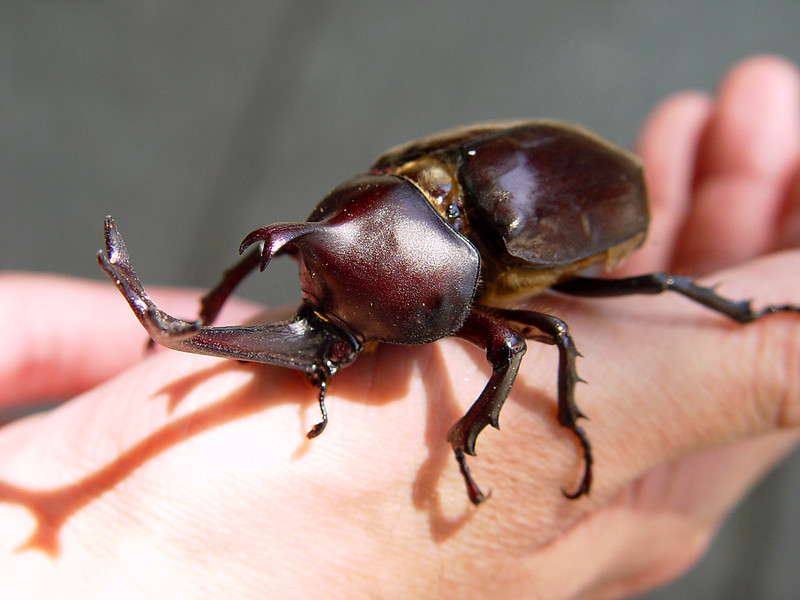Jul 31, 2024
Your Guide to Bugs, Wanted and Unwanted
Bugs are usually at the bottom of the invited guests list for any residence. Japan is home to a rather diverse amount of insects from cute butterflies to large, venomous centipedes normally found only in the recesses of our nightmares. Summertime brings increased insect activity all over the country, which leads to increased insect-human interactions. Feeling a bit bugged out? Look no further!
Kind of Creepy, Kind of Neat
Some of the bugs you may encounter pose very little threat to humans and either came in by accident or are simply there to hunt the other bugs you may have in your residence.
If you have a garden, you may run into the “geji geji mushi,” or the house centipede. Other than being quite fast and rather unseemly in appearance, these bugs are just on the hunt for other bugs and will happily stay out of your house should you scoop them into a bowl of some sorts and flick them back outside.
You have probably heard their cries for a few weeks already, but summer in Japan immediately brings the ubiquitous cicadas. Called “semi” in Japanese, these bugs only live a very brief time after emerging from the ground and have no real aspirations to be inside your house. They usually only enter when windows or doors are left open. Fairly docile, they can easily be captured via a bug net or a bucket and strong piece of paper method. As they are somehow not the most accurate at flying, they tend to hurl themselves straight into doors and walls or at the faces of unsuspecting residents at fairly high speeds.
Nightmare Fuel
Depending on where you previously lived, your experience with cockroaches may vary. Smaller breeds like the German cockroaches do not fly and are simply pests whereas American cockroaches somehow manage to both be bigger and fly (because why not be more horrific than you need to be?).
While Japan has a native breed of cockroach, it also has had both German and American breeds introduced much to the disdain of all homemakers. The same rules apply here as back home: Keep your kitchen and floors clean, keep areas like the shower free of humidity and regularly air out any sort of outdoor shed or other garden storage units as they can very quickly become ideal breeding grounds. You have many choices for helping to keep cockroaches at bay like Black Cap (Japanese Rakuten link) and pest control services can be contacted as needed.
Where your experience may differ from back home is that a lot of Japanese homes, particularly older ones, will have more numerous access points for insects like cockroaches to enter. Keep in mind where each of these access points may be so you can more effectively counter any problems proactively.
What you may not necessarily have experience with is the Japanese “mukade,” or Japanese centipede. These are rather terrifying as they are quite large, quite fast, quite aggressive and quite venomous. Bites from these can leave victims with raised skin and pain that can last for hours, even from the smaller breeds. There are many homebrewed methods for dealing with these including duct taping them so you can cleanly sever the head with a knife or throwing a bucket on top of them and then having a panic attack for a bit (do note that if the bucket is not heavy enough, the larger breeds have no problem pushing it around on the floor, which can be hilarious when it is someone else’s problem). While the possibility is not zero, these are usually only found out in the countryside or in areas with large amounts of forest.
Topping off the nightmare fuel is the Asian Giant Hornet or the “suzumebachi” in Japanese (literally meaning “sparrow bee”). These are the biggest, baddest of the wasp species and are known for both aggression and for having both an extremely painful bite and an even worse sting. If you see these in your backyard or around your house, your best bet is to keep all windows closed and immediately contact pest control services for removal. Smaller species like the “ashinagabachi” (a type of wasp) can be dealt with using care and insecticide sprays found in any garden section.
Wait, These Guys are Kind of Neat
However, not all 6-legged beings are here to haunt your dreams or inconvenience you while hanging laundry. Popular amongst kids, the “kabuto mushi” (Japanese rhino beetle) and “kuwagata mushi” (Japanese stag beetle) are rare sights and frequently captured by children during the summer. Should you be lucky enough to come across one, bug cases, appropriate dirt and branches and bug jellies are available in abundance even at the 100 yen shops and online care guides abound. The author can attest that Japanese rhino beetles are rather docile, fun to watch and big fans of being fed watermelon.
Anyone who has small kids and does not mind handling the beetles would find keeping them around to be a fun summer project.
—
Wesley Chan via Flickr, CC BY-NC-ND 2.0


About the author